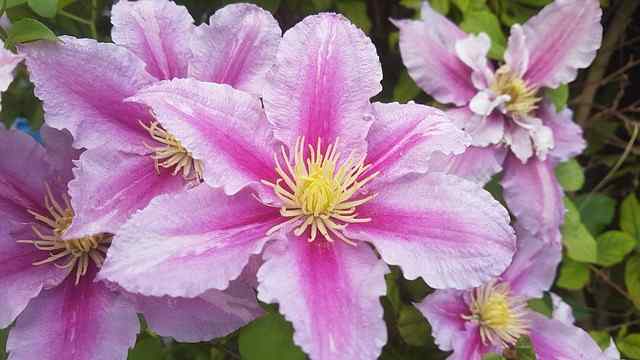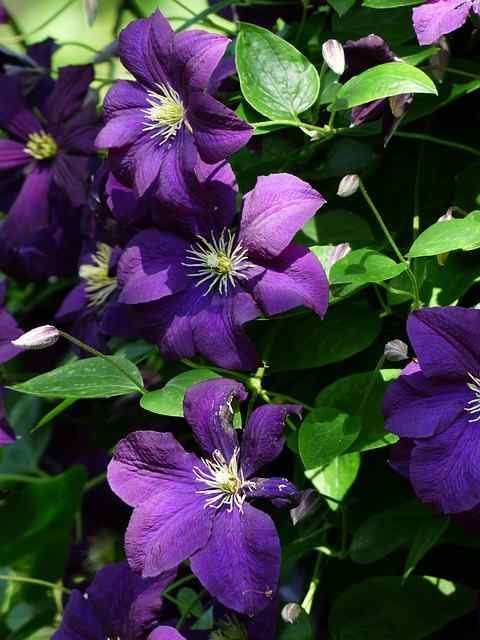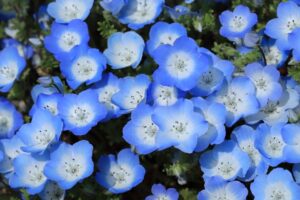Can clematis grow indoors? As we unravel this topic, we will explore what clematis needs to thrive, the challenges of growing it indoors, and some possible solutions for indoor cultivation.
Understanding Clematis

Clematis, part of the Ranunculaceae family, consists of over 300 species and numerous cultivars. These plants are native to various climates, primarily in Europe, Asia, and North America. They vary immensely in growth habits, flower sizes, and colors, making them one of the most versatile flowering plants in gardening.
Climate and Growth Habits
Clematis generally prefers temperate climates with distinct seasons. Many species thrive in areas that have cool winters and warm summers, which allows the plant to enter dormancy during the colder months and come back to life as spring arrives. This natural cycle harmonizes with their growth habits; clematis vines can grow exceptionally tall, sometimes reaching heights of up to 20 feet, depending on the variety.
Flowering Seasons
One of the remarkable aspects of clematis is its extended flowering season, which can last from late spring through early fall. Various cultivars bloom at different times, so careful selection can ensure a garden is adorned with color for many months. This flowering pattern contributes to the allure of clematis, but it also highlights the specific environmental conditions it has adapted to outdoors.
The Indoor Environment: A Challenge for Clematis

When contemplating the question of whether clematis can thrive indoors, it’s essential to understand the challenges posed by indoor growing conditions.
Light Requirements
Clematis typically needs full sun to partial shade to flourish. Ideally, they require around six to eight hours of sunlight daily. Indoor environments often lack adequate light, especially during shorter winter days or in rooms with limited windows. Insufficient light exposure can lead to weak growth, poor flowering, and overall poor health.
Soil and Drainage
Clematis also has specific soil requirements. They prefer well-drained, nutrient-rich soil with a slightly acidic to neutral pH. Finding the right potting mix that meets these criteria and allowing proper drainage can pose challenges. Indoor pots can easily become waterlogged, potentially causing root rot—a death knell for this delicate plant.
Humidity and Temperature
Growing clematis indoors necessitates a careful consideration of humidity and temperature. Indoors, the air can be much drier and more stable than the outdoor environment. Clematis, however, typically enjoys moderate to high humidity levels. Additionally, sudden temperature fluctuations between day and night can stress the plant. Maintaining a consistent temperature that mimics its native climate is often difficult in indoor settings.
Space Constraints
Given that clematis vines can grow exuberantly, space becomes another important consideration for indoor cultivation. While some may have the luxury of ceiling heights and ample room, many living spaces are limited in dimensions. Indoors, the growth of these plants may be stunted simply due to lack of climbing space, significantly influencing their ability to thrive.
Choosing the Right Clematis Variety

If you’re still intrigued by the idea of growing clematis indoors, the first step is selecting the right variety. Not all clematis are created equal in terms of adaptability to indoor conditions.
Smaller Varieties
Some smaller clematis varieties, like ‘Little Edith,’ produce delightful flowers without the notoriously aggressive growth patterns of their larger counterparts. These miniature varieties are more likely to adapt to an indoor lifestyle. Choosing a smaller cultivar won’t guarantee success, but it might offer a more manageable approach.
Herbaceous vs. Woody Clematis
Another consideration is the distinction between herbaceous and woody clematis. Herbaceous types die back to the ground in winter, making them slightly less demanding during the colder months. They can be a bit easier to manage indoors. In contrast, woody clematis usually requires a higher level of care and attention throughout the year.
Best Practices for Growing Clematis Indoors

If you’re determined to invite clematis into your home, successful cultivation requires evaluating and adjusting various factors in your indoor environment.
Creating Suitable Light Conditions
To ensure adequate light for your clematis, consider placing the pot close to south-facing windows where it can soak in as much light as possible. Alternatively, if natural light is insufficient, using grow lights can provide the needed spectrum for healthy growth. LEDs that are tailored for plant growth can mimic sunlight and help maintain the plant’s vitality.
Choosing the Right Potting Mix
A suitable potting mix is vital for indoor clematis. Look for a blend specifically for container plants or one that promotes good drainage. Incorporating materials like perlite or coarse sand can also help achieve a balanced texture, allowing excess moisture to escape while retaining enough nutrients for healthy growth.
Regular Watering and Fertilization
Watering must strike a delicate balance; clematis likes its soil to be consistently moist but not soggy. Regular checks are necessary to ensure the soil is not too dry or too wet. Implementing a schedule for both watering and fertilization can keep the clematis healthy. Using a balanced, slow-release fertilizer during the growing season can nourish your plant, giving it the best chance of blooming.
Monitoring Humidity and Temperature
To maintain the ideal humidity for clematis, consider placing a small humidifier nearby or grouping plants together to create a more humid microclimate. Alternatively, placing a water tray with pebbles beneath the pot can encourage evaporation and increase humidity around the plant.
Providing Support for Growth
Since clematis is a climbing vine, ensuring it has a support structure is crucial for its growth. Install a trellis or other support system in the pot to create an environment where the clematis can spread and grow vertically. This not only satisfies the plant’s natural growth pattern but also enhances its aesthetic appeal indoors.
Seasonal Adjustments
Caring for clematis indoors means adjusting your care routine as the seasons change. During winter, many plants require less water and may not need as much light. Understanding the dormancy period and adjusting your care accordingly can prevent over-watering or shock when the plant begins to wake up in spring.
Potential Challenges and Solutions
Although growing clematis indoors is a captivating idea, it’s not without its challenges.
Pest Management
Indoor plants can still fall victim to pests like spider mites and aphids. Regular inspections are necessary to catch any issues early. Using natural insecticidal soap or neem oil can help mitigate these pests without posing much harm to the plant.
Pruning Considerations
Pruning clematis is essential for promoting healthy growth and limiting size. Determining the right time to prune can be complex and varies by the specific clematis variety. Generally, pruning should be done when the plant is dormant, but ensuring you do not cut too much can be the key to maintaining the plant’s vigor.
Recognizing Signs of Distress
Being attentive to your clematis can reveal much about its health. Yellowing leaves may indicate overwatering, while wilting may suggest under-watering. Learning to recognize these signs can provide an opportunity to adjust care before the plant declines further.
Conclusion: A Love for Clematis
While growing clematis indoors poses several challenges that require attention and effort, it can be an incredibly rewarding endeavor for passionate gardeners. If you’re willing to embrace the intricacies of clematis and modify your indoor environment to meet its demands, there is a possibility for success.





